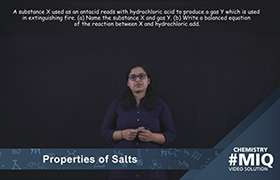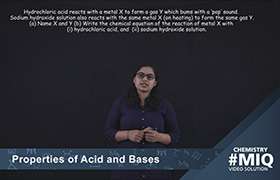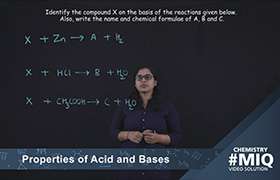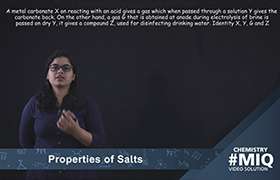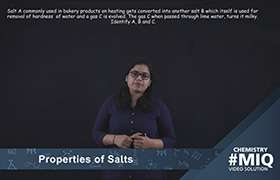CBSE Class 10 Answered
General rules for assigning oxidation number to an atom:
Determine whether the substance in question is elemental. Free, uncombined elemental atoms always have an oxidation number of 0. This is true both for atoms whose elemental form is composed of a lone atom, as well as atoms whose elemental form is diatomic or polyatomic.
For example, Al(s) and Cl2 both have oxidation numbers of 0 because they are in their uncombined elemental forms.
Note that Sulfur's elemental form, S8, or octasulfur, though irregular, also has an oxidation number of 0.
Determine whether the substance in question is an ion. Ions have oxidation numbers equal to their charge. This is true both for ions that are not bound to any other elements as well as for ions that form part of an ionic compound.
For instance, the ion Cl- has an oxidation number of -1.
The Cl ion still has an oxidation number of -1 when it's part of the compound NaCl. Because the Na ion, by definition, has a charge of +1, we know that the Cl ion has a charge of -1, so its oxidation number is still -1.
For metallic ions, know that multiple oxidation numbers are possible. Many metallic elements can have more than one charge. For instance, the metal Iron (Fe) can be an ion with a charge of either +2 or +3.Metallic ions' charges (and thus oxidation numbers) can be determined either in relation to the charges of other atoms in the compound they are a part of, or, when written in text, by roman numeral notation (as in the sentence, "The iron(III) ion has a charge of +3.").
For example, let's examine a compound containing the metallic aluminum ion. The compound AlCl3 has an overall charge of 0. Because we know that Cl- ions have a charge of -1 and there are 3 Cl- ions in the compound, the Al ion must have a charge of +3 so that the overall charge of all the ions adds to 0. Thus, Al's oxidation number is +3.
The rules have been formulated on the basis of the assumption that electrons in a covalent bond belong entirely to the more electronegative atom.
Oxidation number (O.N) of:
Atoms in free elemental state (like H2, Na, O2, Ag etc) = 0
Oxidation number of simple monoatomic ions = Charge on them ( For example : Halogens (like Fluorine, chlorine) = -1, Na+ = +1, Ca+2 = +2 etc)
Oxygen = -2; in peroxides (-1); F2O(+2); F2O2(+1)Hydrogen = +1; however in metal hydrides it is (-1)
Sum of O.N. of all the atoms in molecules = 0
Sum of O.N. of atoms in polyatomic ions = overall charge on them.

